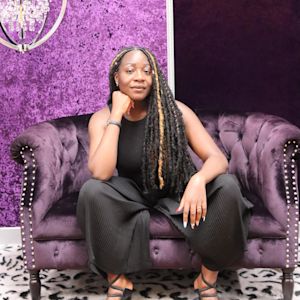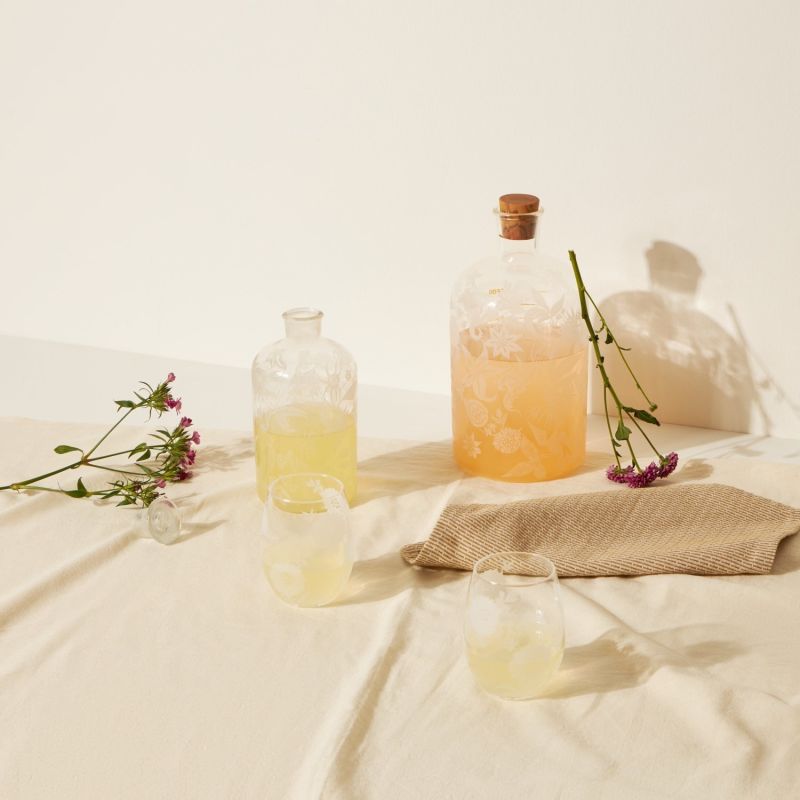Good People
A Meaningful Home
Words by Sarah Micho
Photography by Alex Blouin and Jodi Heartz
Making a home is an immersive process. The decisions we make on products, brands and colorways—be them functional or aesthetic—give us a sense of belonging however overwhelming the process might be. Siafu Home creates an experience around the art of homemaking—inviting people to select pieces steeped in community and history. Personally, I was drawn to the warmth of the brand and the strong East African cultural influences.
Naturally, these pieces were imagined by someone with a great regard for the home, Gladys Macharia. From traditional colorful Kenyan Maasai print dining napkins to rich wood engraved salad spoons, Siafu Home’s co-founder beautifully combines rich history and culture in the intimate process of creating one’s own space. From her base in Nairobi, Gladys took me on a journey through her influences, her creative process, and how she balances community and business.
Siafu Home Olive Wood Serving Spoons
The emphasis on community building and collaboration is a theme represented across Siafu Home. What was your personal creative journey to get there?
I did my university education in Johannesburg before heading to Florence where I studied fashion design at Accademia Italiana. I stayed in Florence for seven years working for Ermanno Scervino, focusing on clothing embellishments. I had always loved jewelry and, while studying, I worked at a beading shop. I remember asking my dad if I could go back to school to study gemmology. He nearly had a heart attack! He felt that “being a creative” was something you could do in your spare time. However, I did end up studying gemmology and goldsmithing. Upon completion, I moved back to Kenya. I’d always known I wanted to apply my learnings into teaching people and being a part of building the creative industry here. Coming back home, [I realized] there’s definitely a huge gap in the creative sector, it’s something that’s difficult for Africans to do well in because, financially, it’s a struggle.
How did the collaboration between yourself and Siafu co-founder Niccola Milnes begin?
Niccola had moved back to Vermont in the US and I was there for my brother’s wedding. We started chatting about life and changes. One of the things she mentioned was the amount of attention and questions regarding her home—things like favorite finds sourced at the market and put together in a space. She asked me if I would be interested in starting up a business, where we would source our favorite finds from Kenya—things we found in markets, things made by artisans. The idea started off simple: collecting home pieces from Kenya and selling them in the US. Organically, things started to gain momentum and [meeting] the right people, at the right time, led to receiving commissions to design furniture. From there, Niccola and I decided we definitely needed to create an identity for this brand. That’s how Siafu came about. Though right now, Niccola is not active in the business and I’m taking on more of Siafu’s creative direction from Nairobi.
The brand began out of a genuine and mutually reciprocal relationship. How does that reciprocity play a role in Siafu’s values of uplifting and collaborating with local Kenyan artists?
Siafu, for me, really became a platform to express my relationship with all the artisans I had worked with over the last ten years. I try to find a synergy between artisans, their materials and then incorporate that into Siafu allowing consumers to have products which tell a more meaningful story. Not just about the brand, but the people behind the brand. One of my missions has really been to put an emphasis on the importance of sustainable living. We spend a huge percentage of our lives in our homes. The home is a safe space that so many people look forward to returning to. A lot of times, you don’t know where a material has come from and its environmental impact, so I felt I needed to ask myself where things came from. One of my passion projects is trying to make dining and homewares a ceremony in Kenyan culture. The ceremony of creating something beautiful on the table, it’s almost meditative and it makes you appreciate the process of eating even more.
Through boldly colored and accented pieces, such as the Kuba napkins and Camel bone napkin rings, your background in design and gemmology echoes beautifully. How did these items come about and what’s their connection to the larger message Siafu is communicating?
The main focus of all the materials we use is upcycling. We look at creative ways of utilizing waste materials. The napkin rings are made using horn and bone, which are both animal by-products. We collect bottles from hotels, friends and sources in the community to make glasses. With the Kuba napkins, the structural breakdown of textiles and how you can apply different visuals onto them was important. Textiles allow you to throw on color and texture—tell a story about the looms and the weaving. I’m so passionate about fabrics and there isn’t a lot to work with in Kenya, in terms of industries. It’s where I see Siafu making a huge impact: within the textile industry.
You emphasize on key themes, such as circularity and sustainability, which are important issues that many brands are calling attention to. How is Siafu’s storytelling different?
I really see Siafu growing into a channel that other brands or retailers can use to tap into incredible craftsmanship and artisan work in East Africa and be a part of our story. We chose ‘Siafu’ as a name because in Swahili, ‘siafu’ means ant. The ant symbolizes how we work together as a community. Ants are always building, cleaning, foraging and, in many ways, that perfectly describes our clients, being men and women who are constantly building homes, taking care of a community, and supporting each other.
What are some of the challenges you have encountered on your journey?
Africa being such a young nation, a young continent, has skipped the steps of Western industrialization and, because of that, we’ve skipped an important step—manufacturing and buying local. Now it’s all just importing. Sixty years ago, there were twenty-seven ginneries (cotton processing factories), now there are only four. [Kenya] is at a point where we are importing so much that we’ve sadly killed a lot of industries like the cotton industry. This has caused the entire textile industry in Kenya to collapse since gaining political independence. Now that the cotton industry has collapsed, it has become expensive to produce in Africa. Many people look at products made in China and India and then compare that to Africa and say “I can make this for a fraction of the price”. There’s a misconception that just because something is made in Africa it must be cheap.
Keeping those challenges in mind, while running Siafu, how do you find a balance between business, the environment and community?
One of the things I’ve learnt is how climate change is impacting cotton. We have shorter rains and less rain, which means that we’re not able to harvest twice a year—we can only harvest once a year. When we harvest the cotton, it is not as plentiful. I’m hoping we will be one of the first to position ourselves in the Kenyan handmade textile industry and change consumer ways of buying textiles, slowing down the process by making it more of a meaningful process. Siafu’s goal has always been to challenge others to try and be more conscious of what they buy, where it’s from and how it’s made.
Observing the ways in which Gladys has infused Siafu with such purpose, one cannot help but reflect on the values of conscious living and the importance of investing in communities. Siafu truly embodies the creative way of living harmoniously within the places we call our homes.

About About Sarah Micho
Sarah is a Black Canadian writer, designer and creative storyteller. As a child of Nigerian immigrant parents, she grew up living across multiple different provinces in Canada and defining home on her own terms. In 2021, she relocated to Paris, France to study fashion design and hopes to continue utilizing her passion for writing, fashion, culture and design to expand her creative universe in what she can be, have or do in her life.


































